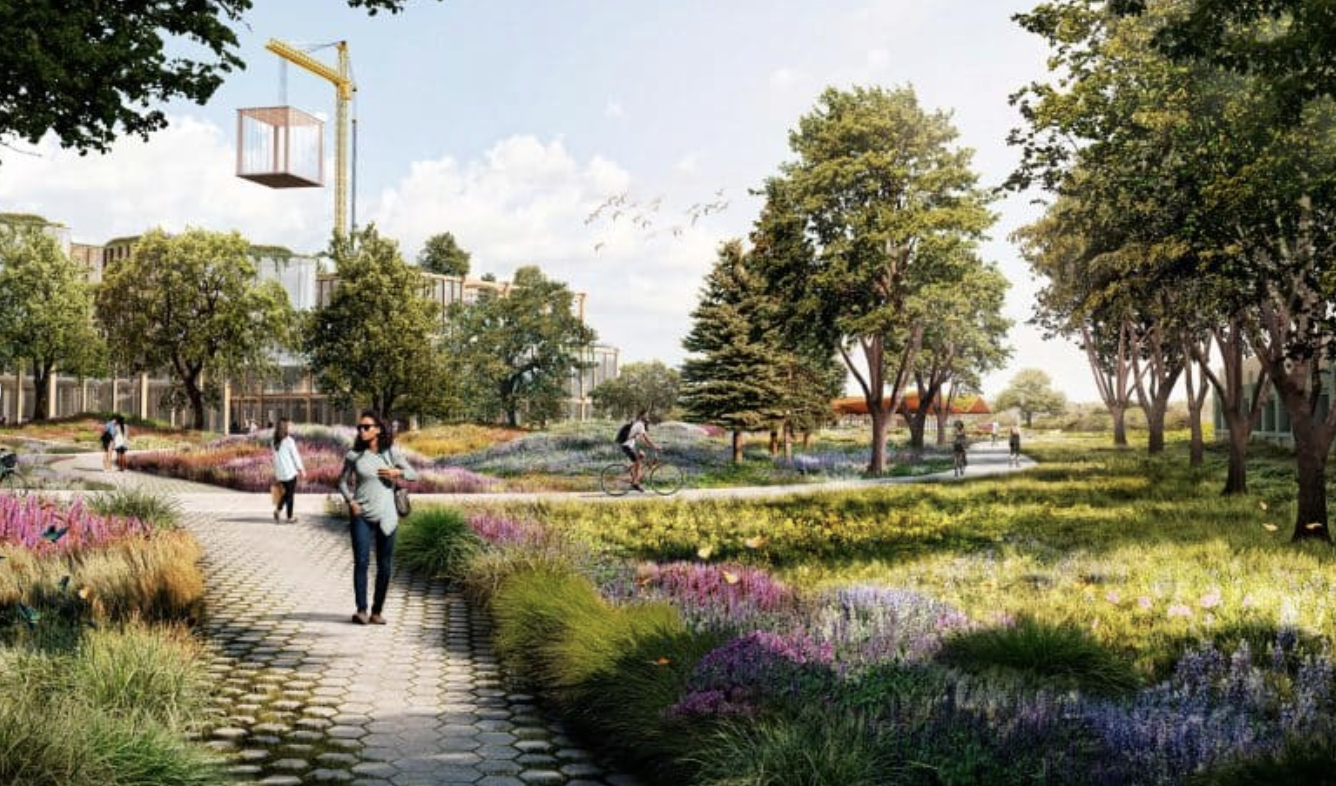Google’s new housing development will get suburban workers out of their cars

Sitelab
The sprawling office park near the main buildings at Google’s headquarters in Mountain View, California, looks a lot like other corporate campuses in Silicon Valley, with low buildings sitting in a sea of parking. But the company hopes to transform it into a walkable, liveable neighborhood—and the designers working with Google on the redesign hope that it can become a model for turning other pavement-filled suburbs into green spaces where people are less likely to drive.
“In many ways, the premise of making a more bikeable, walkable, human-scale neighborhood was the starting point and fundamental to the project,” says Laura Crescimano, founder of Sitelab Urban Studio, the urban design and strategy firm that led the creation of a proposed plan—now under a long process of review by the city of Mountain View—to use the land to build 5,700 new homes while shrinking local traffic.
The plan calls for 3.12 million square feet of office space and as much as 400,000 square feet of new retail space along with the homes. Twenty percent of the housing will be affordable. It’s a response to a plan passed by the city in 2017 that rezoned the area, called the North Bayshore district, to spur new housing development because of the housing crisis. (The demand for housing in Mountain View is so great that a small house that was completely destroyed in a fire recently sold for $1.6 million, above the asking price of $1.48 million; the house previously sold for $16,000 in 1955.)
Google, which owns most of the land in two areas called Shorebird and Joaquin, wanted to use its property to help begin to tackle the local housing shortage. But it also wanted to do that in a way that made people living there less likely to drive. The proposed design expands the “green loop,” a multi-use trail that currently exists between Google offices, to circle the entire district. “It’s hundreds of acres that now, instead of just connecting an office building to an office building, it’s connecting neighborhoods,” says Crescimano. The plan connects the loop to regional trails and a new bike bridge, being built by the city, that crosses a nearby highway so that people can easily walk or ride a bike into downtown Mountain View and reach the train station. Within the new development, a pedestrian-focused “social spine” lined with retail stores and other neighborhood amenities will be a short walk from apartments, so residents don’t have to drive to run most errands. An elementary school is planned for the district, so kids can also walk to school. The plan also calls for a “pretty aggressive” reduction in parking compared to standard developments in the area, she says, with parking consolidated in garages that can later be converted into other uses.
“It’s really flipping the paradigm of designing for the car to be designing for people, and designing for people moving around on bike or walking,” Crescimano says. The plan calls for expanding community shuttles in the area, adding bike-share programs and bike storage, car-sharing programs, and transit passes for residents. Pedestrian and bike paths will cover 7.5 miles.
Many residents will also drive less because they work at Google, or at one of the other companies in the area, though the housing will be open for anyone to rent, not just employees. Although Google already tries to incentivize people not to drive alone to work—with showers and changing rooms for bike commuters and company shuttles, among other approaches—making it possible to walk to work may be the most effective way to actually get people out of cars.
It still isn’t clear if the neighborhood will be built as planned, though Google and the design team worked closely to meet the city’s goals with the plan. After the proposal was submitted late last year, along with another proposal in one area also owned by another company, the city began the process of creating its own master plan that synthesized the ideas. Google estimates that the first buildings may not be completed until sometime between 2023 and 2030. And it’s not clear how effective the design will be at ending residents’ car dependency. In a car-centric city like Mountain View, some people might be resistant to changing their habits. But Crescimano thinks that it may be less difficult than one might expect. Many people who work in Silicon Valley decide to live in San Francisco because they want to be able to walk to do things immediately outside their apartment; if neighborhoods became more vibrant and walkable in the suburbs, that might change. “I think as people, we like convenience,” she says. “But I don’t know that we really want to be in our cars.”
You can find this Fast Company article here.